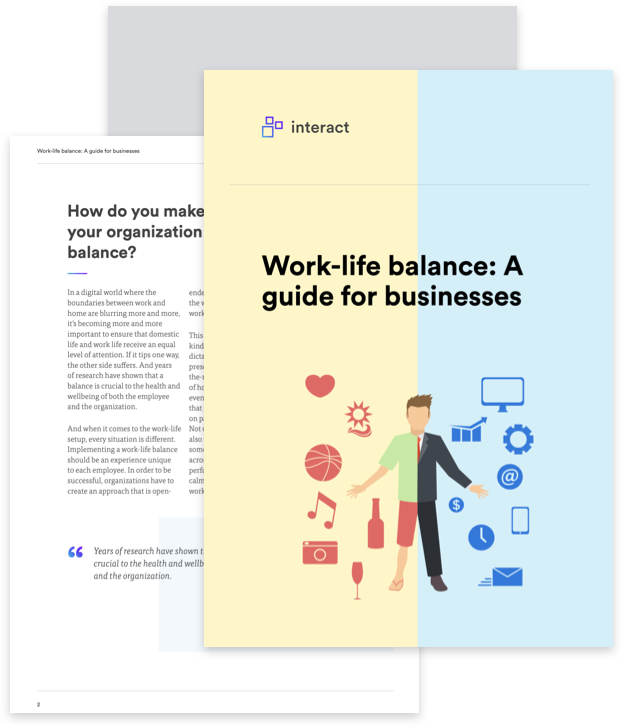Inspiring our staff to bring their best selves to work is proven to make for more productive, innovative, and successful organizations. But how do you nurture confidence and battle imposter syndrome in employees?
Confidence – the belief in ourselves and the conviction that we have the ability to meet life’s challenges and succeed – is one of the defining factors for both individual and organizational success.
However, for many, it can be an allusive quality.
No matter how skilled and technically proficient our staff are, those skills mean nothing if they don’t have the confidence to use them.
As individuals, some of us naturally exert more confidence than others. We may be more comfortable in certain situations or around particular individuals than others. And it’s more than natural to experience self-doubt or knocks in self-esteem when things perhaps don’t go the way we planned, when facing periods of change, or when entering a new role and taking on new responsibilities.
The challenge is, no matter how skilled and technically proficient our staff are, those skills mean nothing if they don’t have the confidence to use them. And if you have individuals lacking the confidence to speak out, put ideas forward, or challenge the ideas of others, you risk holding back your organization: creating a culture where only the select few steers it’s direction.
Confident employees, on the other hand, will be:
- More productive and engaged
- Willing to contribute and innovate
- Stronger collaborators with their professional peers
- Happy to voice concerns or speak out when things aren’t right
- Open to learning and development opportunities
- Early adopters of new tools, technologies, processes or changes
- Empowered to do their best work
Whether you have naturally introverted employees or individuals who are simply experiencing a temporary lapse in self-esteem, understanding how to support, nurture, and grow their confidence is critical.
So, how do we do it?
Work-life balance: is your business getting it right?
Confidence: nature or nurture?
But what even is confidence? Is it something we either have, or we don’t? Something we tap into, or something we can grow?
“Confidence is the necessary spark before everything that follows. It is the difference between being inspired and actually getting started; between trying and doing until it’s done. Confidence keeps us going even when we’re failed.”
– Brittany Packnett, ‘How to build your confidence – and spark it in others’, TED Talks.
Many of us believe we know what confidence is and looks like, but very few understand how we get it. There are limitless books, workshops, talks and articles focused on the issue. Often, it’s regarded as something the lucky few are born with – and the rest of us wish we had. But it’s not as simple as that.

In fact, scientists and psychologists argue confidence is shaped by three things:
- What you’re born with: such as your genes, which will impact things like the balance of neurochemicals in your brain
- How you’re treated: the social pressures of your environment
- Ourselves: the choices we make, the risks we take, the beliefs we hold, and how we think and respond to challenges
As leaders and managers, we can’t change what our staff are born with: but we do influence how employees are treated in our workplaces. We can also support individuals when it comes to their choices or thinking, helping to nurture their belief in their own abilities.
Here’s just some of the ways leaders can grow confidence.
#1. Recognize that confidence comes in many forms
Traditionally, the term ‘confidence’ is associated with extrovert behaviors. This includes those who speak loudest or freely assert their opinions, are comfortable in group situations or meeting with new people, or perhaps adopt a more dominant demeanor when they walk into the room.
Confidence actually manifests in many forms and it can look different on everyone.

Those demonstrating stereotypically ‘confident’ behaviors may in fact been masking insecurities or lack of self-esteem; the more introverted among your staff could be the ‘quietly confident’ who have assurance in their own skills and abilities.
Question your own assumptions, which may be holding you back from supporting those who really need it.
Work-life balance: is your business getting it right?
#2. Talk about it
Particularly in a high-pressure or corporate environment, there can be a perception of lack of confidence as a weakness.
In the same way that we historically shied away from discussing mental health in the workplace, moments of feeling ‘not good enough’ don’t tend to be openly talked about.

Open the conversation and show humility with your employees. Rather than directly asking, “do you feel you lack confidence?” which can feel like an attack, speak to them honestly about your own experiences of lapses in confidence and position this as an opportunity for development can help staff.
Are there areas where they’d like to grow their experience and understanding? Where do they feel their strengths and weaknesses lie, and how can you support them? How are they feeling about the upcoming project/presentation/event, and is there anything you can do to prepare them?
#3. Remember that confidence isn’t an all-or-nothing characteristic
Confidence is not all-encompassing.
You aren’t simply a ‘confident person,’ or not. Typically, we’re confident in those areas associated with our particular skills or expertise: but once out our comfort zone, it’s another story entirely. We may also feel confident in ourselves…until a particular event or trigger calls those self-held beliefs into question.

The ‘confident’ senior executive who holds her own in the boardroom won’t necessarily bring that same characteristic to delivering a careers workshop to a group of disinterested teenagers, for example. Or she may hold belief in her abilities until a situation beyond her control creates a negative outcome or criticism from her peers.
Confidence waxes and wanes throughout our lives and even day-to-day. Showing awareness of this will prevent us from ‘branding’ individuals one way or another and reiterate the need to continually invest in and address it.
Work-life balance: is your business getting it right?
#4. Build on what you have
Although some of it comes down to genetics, psychologists agree that building self-confidence is largely volitional – or put simply, “by choice.”
With consistent effort, and the courage to take a risk, we can gradually expand our confidence and with it, our capacity to build more of it.
Neuroplasticity – the ability of our brains to make new connections – enables us to literally rewire our thinking and create more confidence. However, this doesn’t mean we magic confidence out of nowhere: typically, it comes from growing what we have.
As employers and leaders, this means working with – and building on – those strengths and skills already shown by our employees.
This doesn’t mean we silo them into a particular skill area; it’s still vital to push and challenge employees, because this is how they grow and increase their confidence.

Think regular and specific positive feedback, transferring skills to a new project or area of your organization, or gradually increasing ownership and responsibility of an area they’re already showing promise in. There’s a difference between challenging the junior developer to concept up a new product feature – and asking them to deliver a company-wide presentation. Work with what you have.
#5. Understand the reality of imposter syndrome
Imposter syndrome – when an individual doubts their accomplishments or talents and has a persistent internalized fear of being exposed as a ‘fraud’ – is a very real and, in fact, common phenomenon.
An estimated 70% of people experience these feelings at some point, according to the International Journal of Behavioral Science.
It more adversely affects women and individuals from minority backgrounds, and while it’s not the same as confidence it can – for some – have a debilitating impact on their esteem and ability to perform to a high standard. It may also mean those individuals feel unable to ask for help, for fear of being ‘found out’: putting both them at your organization at potential risk.

Understanding, recognizing, and working with imposter syndrome can go a long to counter its effects.
Discuss with employees that there are times we all feel out of our depth or as though we don’t have the right to be there: and acknowledge that it’s normal. It can be harnessed and leveraged as a force for good.
When staff question their skills and abilities, it suggests there’s room for development and upskilling. Encourage them to learn, to ask for help, and gain support from others.
Work-life balance: is your business getting it right?
#6. Give permission by example
“You can’t be what you can’t see,” American civil rights activist Marian Wright Edelman declares.

As human beings, we learn from example and hone our abilities by watching others. For those without the confidence to step into the ring first, having someone demonstrate desired behaviors is a powerful tool and gives them the reassurance that it’s OK to follow and emulate.
This includes giving our staff role models they can aspire and relate to: a nod to the importance of diversity in the workplace, where individuals are more likely to perform to a high standard (and show confidence) if they can see ‘someone like me’ succeeding before them. Mentorship between more experienced or accomplished employees and their less confident peers is another powerful model.
However, it’s effective leadership that can make a real difference. This includes having leaders who have strong communication skills, who demonstrate confidence (but not arrogance!), who invite and listen to ideas, offer clear and positive feedback, and display humility in acknowledging their own lapses in confidence or mistakes.
If we have a leader who isn’t afraid to fail or admit when they’re wrong, we’re more likely to demonstrate similar behaviors.
#7. Give them the necessary tools and information
It’s a fundamental basic, but too often, it gets neglected.
How confident would you be tackling a project where you hadn’t been given a proper brief, had never used the new platform before, didn’t have time to prepare, and didn’t know where to turn if you needed help?

It’s easy to assume that giving a member of staff the responsibility, freedom and autonomy to run with something is a nod to their capabilities and will boost their self-belief and esteem.
However, if the individual doesn’t feel confident to begin with, it may achieve the opposite effect. If they don’t have the right information, training, and support, and then feel they can’t ask for help for fear it will make them look incapable, it can derail quickly.
Give staff clear parameters, additional guidance and decision-making tools when briefing. Give them the opportunity to learn, prepare, and upskill before they need to get going. With the right foundation, they’ll feel happier picking it up and running with it.
Work-life balance: is your business getting it right?
#8. Be specific about what’s right
There’s a world of difference between, “you did a great job, well done,” and “when you gave that feedback, you were really clear about the expectations and showed a deep understanding of the customer needs, which will shape the next phase. Thanks.”
We can default to thinking that giving praise and endorsement will nurture confidence, but if it lacks something tangible that employees can hold onto, it may in fact achieve the opposite.
Dig into the details and give staff clear, specific positive feedback that aligns with their unique strengths and skills.
Time for renewed confidence

If events of the last few months have shown us anything, it’s that confidence isn’t constant. After an intense period of upheaval and uncertainty, many of our employees are reporting lapses in motivation, morale…and confidence.
We may have lost colleagues due to necessary redundancies or furlough programs, or even faced the loss of our own roles. There are corresponding changes in our responsibilities and how we perform our jobs day-to-day. Our natural stress response to the pandemic and circumstances around working from home has caused peaks and slumps in concentration or motivation, leaving many staff questioning themselves and their abilities.
The global impact also means many organizations are facing financial pressures, decreased demand, reduced productivity and output. We may be working as hard as before, but the results aren’t coming.
While the future is still uncertain – and seemingly changing from one day to the next – with the re-opening of schools and workplaces, there’s the sense of a shift to a new state. Now is the time to be investing in, and supporting, those who will carry us through: our employees.
Now is the time for growing our individual – and collective – confidence.



